There’s something oddly satisfying about a well-styled plant shelf. When done right, it’s more than just a spot for greenery, it becomes part of the room’s personality. But getting that effortless balance of plants, pots, and decor isn’t always as intuitive as it looks on Pinterest.
The good news is, you don’t need a design degree or a rare collection of houseplants to make your shelf feel put together. A few thoughtful choices, mixing textures, playing with height, leaving room to breathe, can make a big difference. With the right rhythm of structure and spontaneity, your shelf can reflect your style and keep your plants happy.
Layering Heights
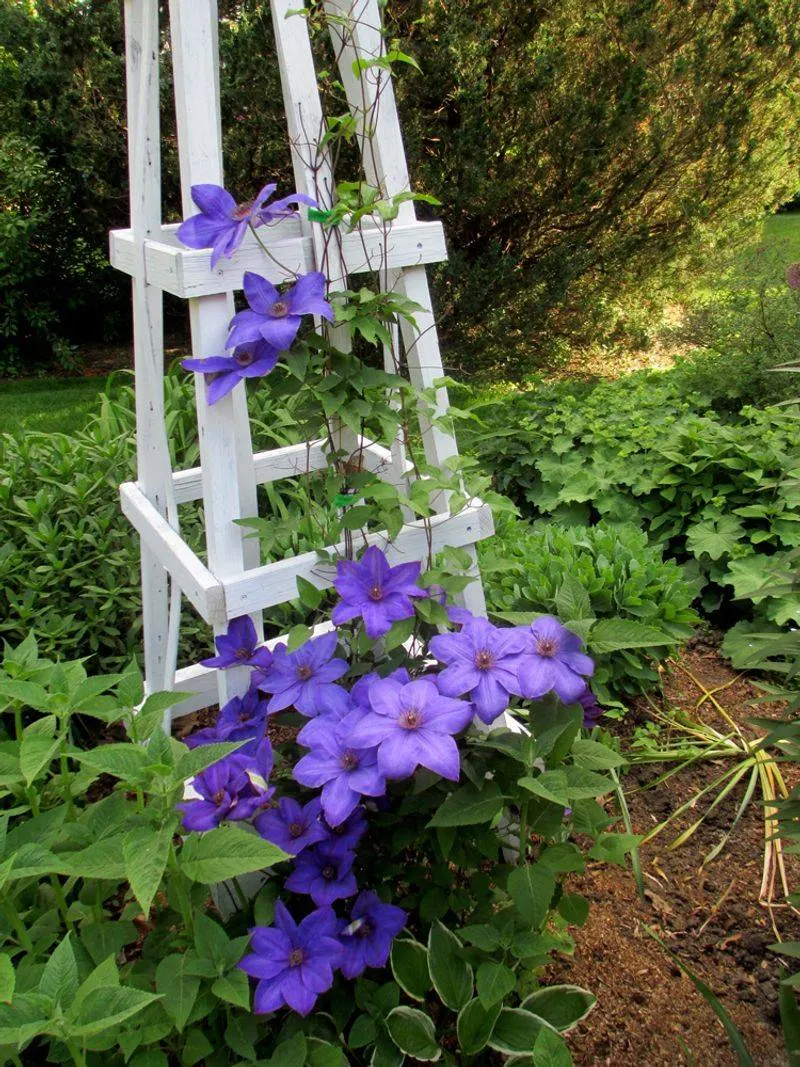
Creating a dynamic display with plants involves layering them by height. Start with taller plants at the back to form a stunning backdrop, like a majestic fiddle leaf fig. Mid-height plants, such as snake plants, add dimension in the middle.
Finally, smaller plants, like succulents, come to the front, adding a touch of charm. This arrangement not only showcases each plant but also ensures none are overshadowed. Mixing plant heights offers an inviting, visually appealing composition that draws the eye.
The variety in height creates a sense of scale and depth on your shelf, making it an engaging focal point.
Color Coordination
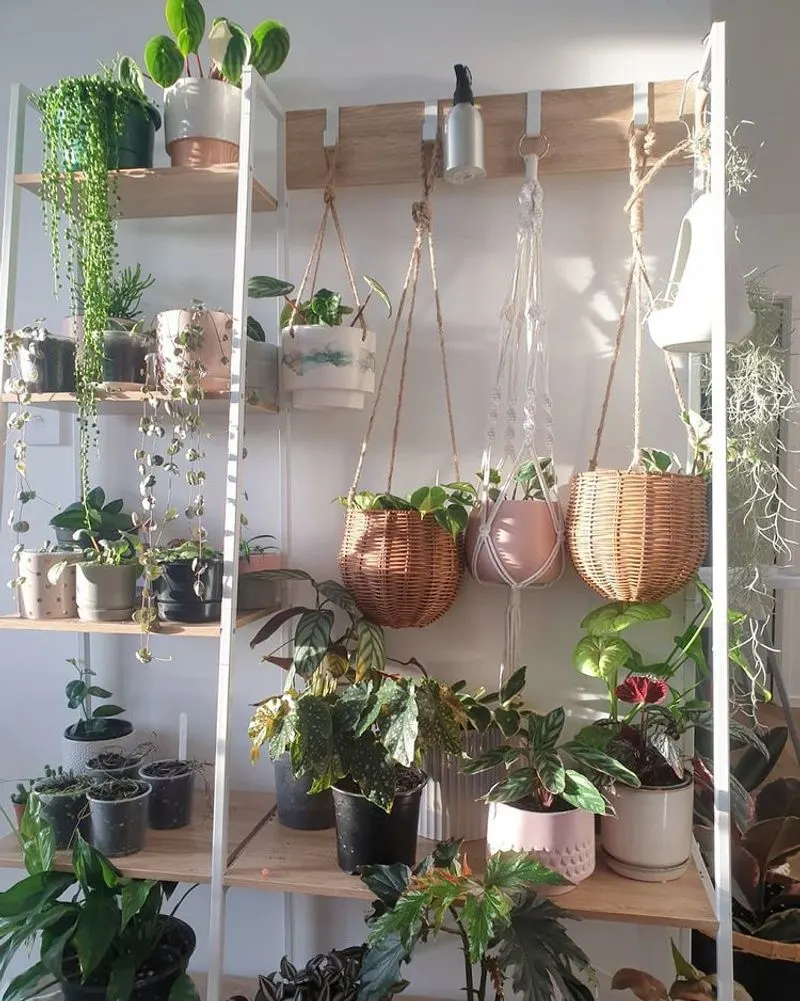
Color coordination brings harmony to a plant shelf. Choose pots and accessories that match or complement the colors in your space. Earthy tones can create a calming effect, while vibrant hues add energy and flair.
For example, using pastel-colored pots alongside green plants creates a soft, soothing look. Incorporating colorful pottery with bold patterns can infuse the space with personality, making it uniquely yours.
A well-coordinated color scheme not only enhances the aesthetic appeal but also ties the shelf into the room’s overall design.
Texture Play
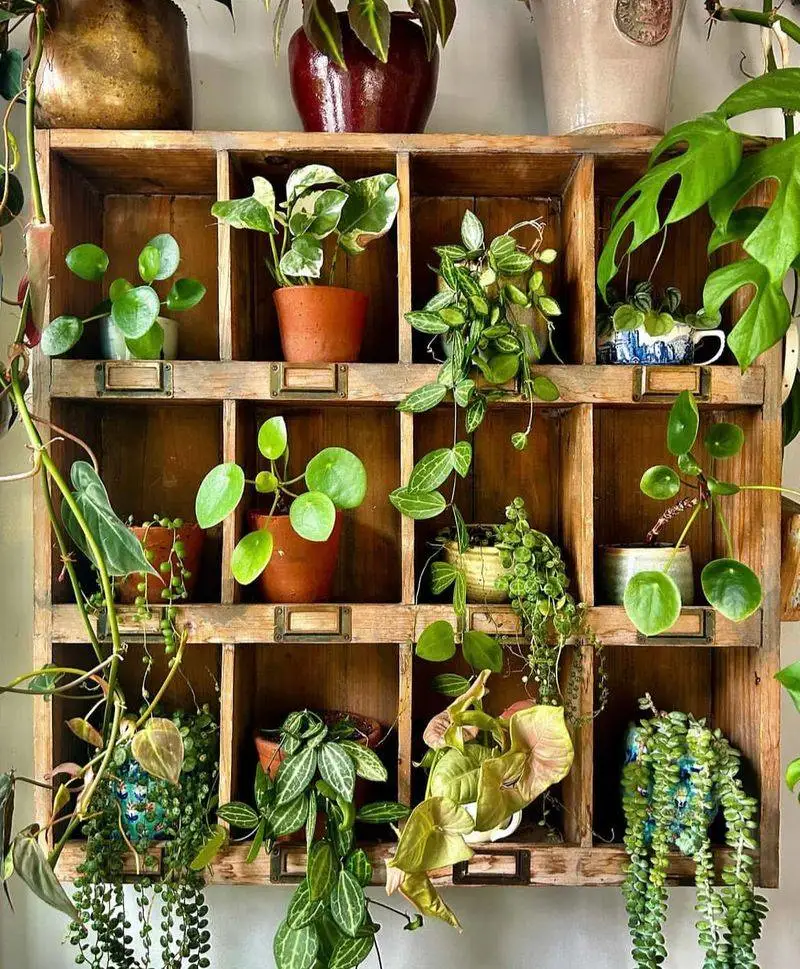
Adding texture to a plant shelf elevates its tactile interest. Mixing different materials, such as terracotta, ceramic, and glass pots, creates a rich, layered look. Textured foliage, like the velvety leaves of a spider plant, adds another dimension.
Incorporate woven baskets or wooden elements for a rustic touch. Combining smooth and rough surfaces creates visual and tactile contrast, making the shelf feel dynamic and engaging.
Textures can evoke warmth and coziness, inviting viewers to explore the diverse materials and forms on display.
Varied Leaf Shapes

Diversity in leaf shapes adds intrigue to plant shelves. Monstera’s broad leaves juxtaposed with the delicate fronds of a maidenhair fern create captivating contrasts.
Choose plants with different leaf sizes and patterns, like the stripes of a zebra plant or the polka dots of a begonia. This diversity not only enhances visual interest but also encourages exploration.
The interplay of shapes draws the eye across the shelf, inviting viewers to appreciate each plant’s unique beauty.
Lighting Effects
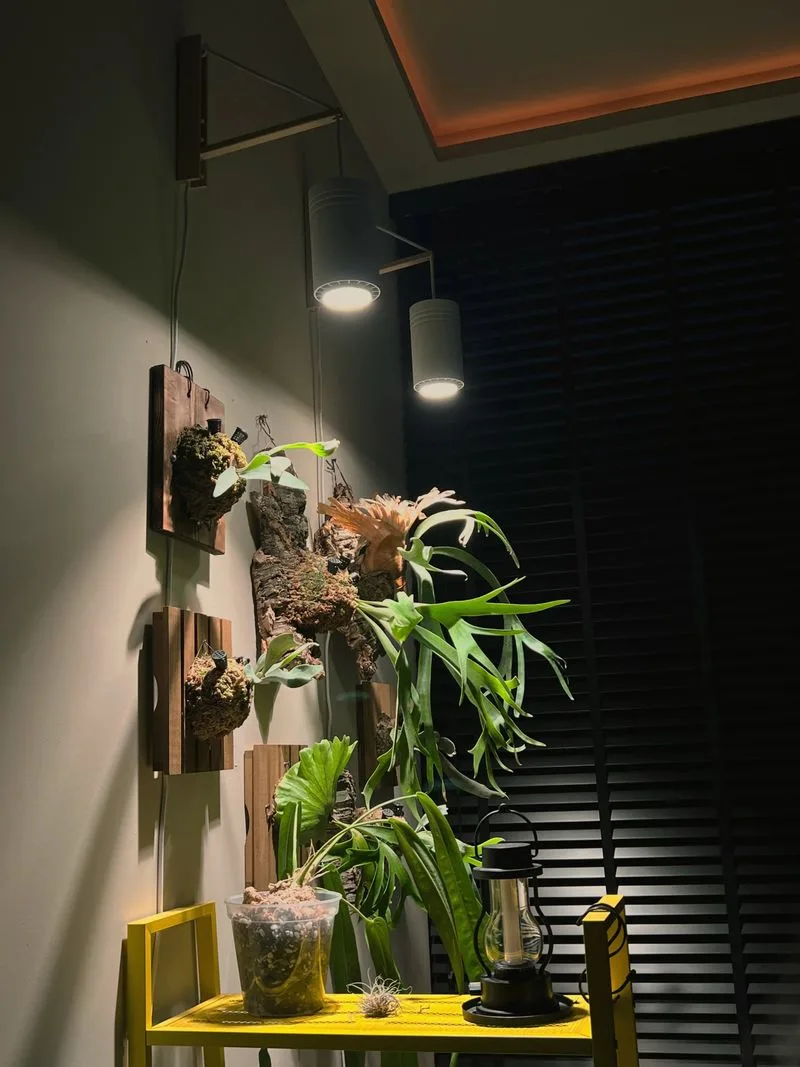
Proper lighting can transform a plant shelf, highlighting textures and colors. Positioning shelves near natural light sources allows plants to thrive while showcasing their vibrant hues.
Add accent lighting, like LED strips or small lamps, to spotlight specific plants or features. This creates a cozy atmosphere and adds depth to the display.
Lighting not only enhances the visual appeal but also supports plant health, making it an essential consideration in shelf styling.
Seasonal Themes
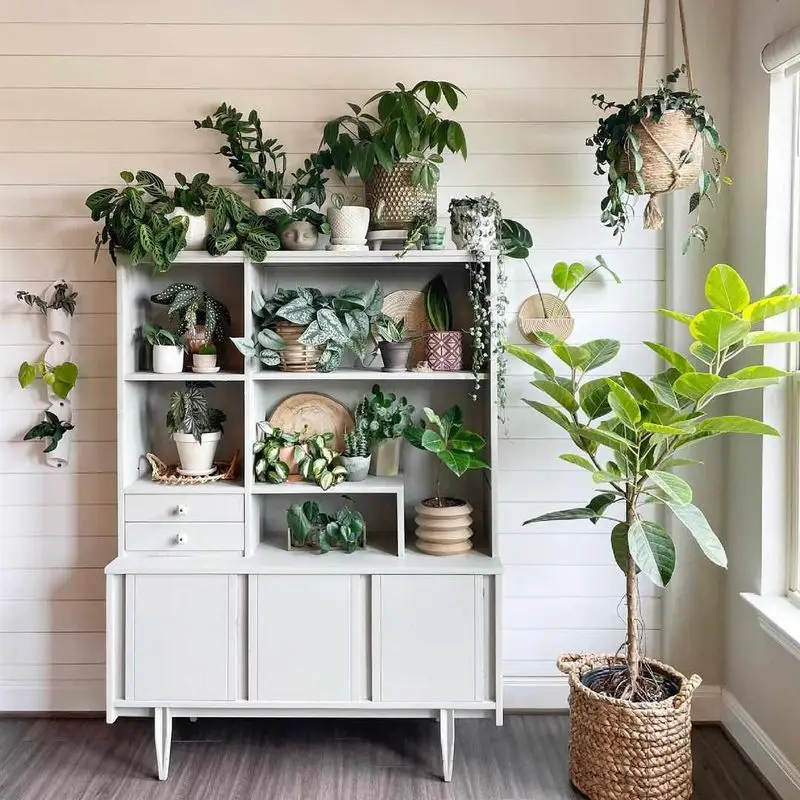
Styling your plant shelf with seasonal themes keeps the display fresh and exciting. Incorporate elements like autumn leaves and mini pumpkins for fall, or seashells and driftwood for summer.
Changing decorations with the seasons adds variety and keeps the space lively and engaging. It’s a simple way to refresh your decor without overhauling the entire shelf.
Seasonal themes reflect the time of year, making your home feel in tune with nature’s cycle.
Incorporating Art

Blending art with plants creates a cultured, personalized shelf. Incorporate small framed prints or sculptures alongside your greenery. The art can provide a focal point or complement the plants’ natural beauty.
Choose pieces that resonate with your tastes, whether minimalist line drawings or vibrant abstracts. This blend of art and nature enriches the visual experience.
Art pieces can introduce color, shape, and intrigue, enhancing the overall composition of the shelf.
Utilizing Negative Space

Negative space is a powerful tool in plant shelf styling. It emphasizes the plants and allows each element to breathe. Avoid overcrowding by leaving gaps between plants and decor.
This approach creates a clean, organized look that highlights each plant’s unique attributes. Negative space also directs focus to the most striking elements on the shelf.
A minimalist composition can evoke a sense of calm and balance, making the shelf feel open and inviting.
Varying Pot Sizes
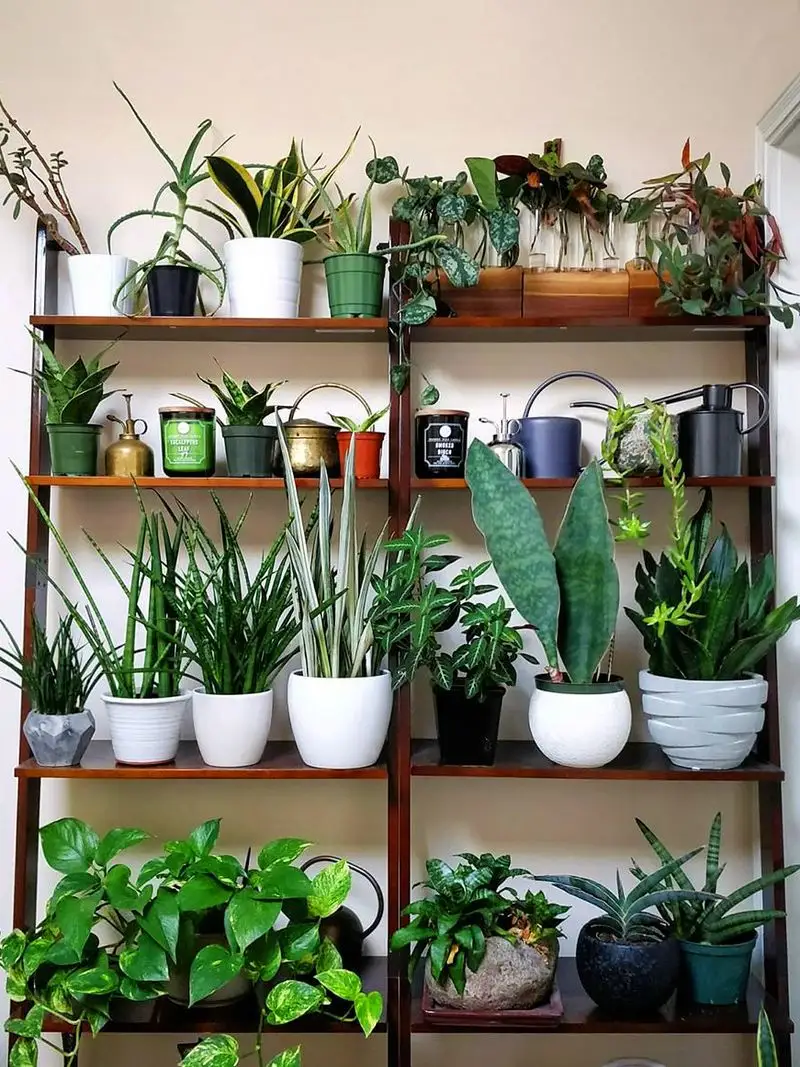
Using pots of various sizes adds interest to a plant shelf. Large, statement pots can anchor the design, while smaller ones add delicate accents.
Mixing pot sizes allows for a diverse plant selection, accommodating different root systems and growth patterns. This variety also contributes to a balanced and dynamic composition.
The interplay of pot sizes creates rhythm and depth, engaging viewers and enhancing the shelf’s visual appeal.
Mixing Plant Types
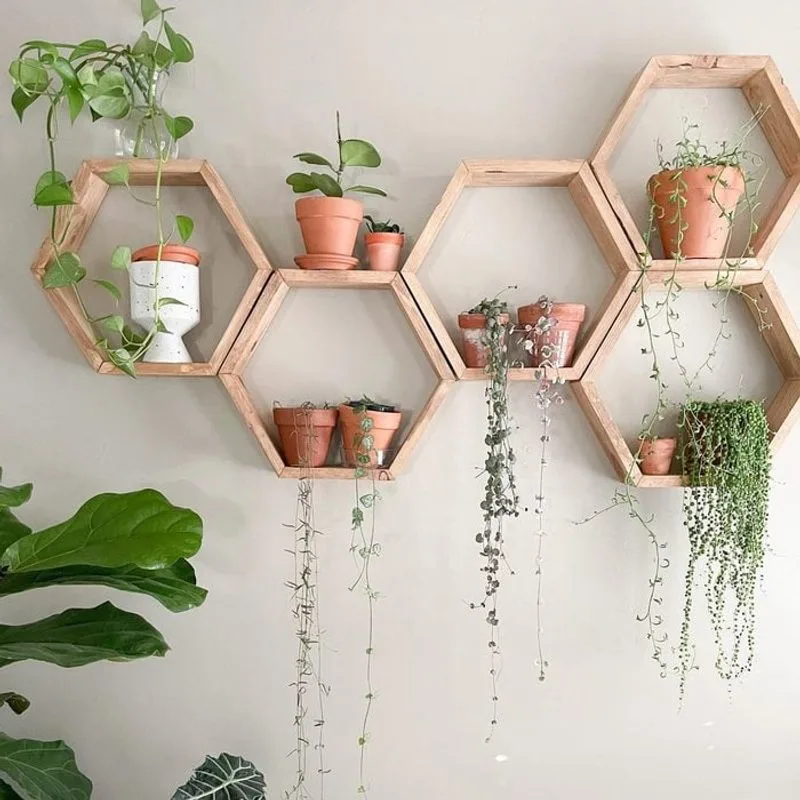
A mix of plant types enriches a shelf’s ecological and visual diversity. Combining succulents, ferns, and trailing vines can produce a lush, vibrant display.
Different plants offer varied textures, colors, and forms, creating complexity and interest. Each species contributes a unique element that enhances the overall composition.
This variety not only pleases the eye but also supports a healthy plant environment, as diverse plant types can coexist harmoniously.
Adding Personal Touches
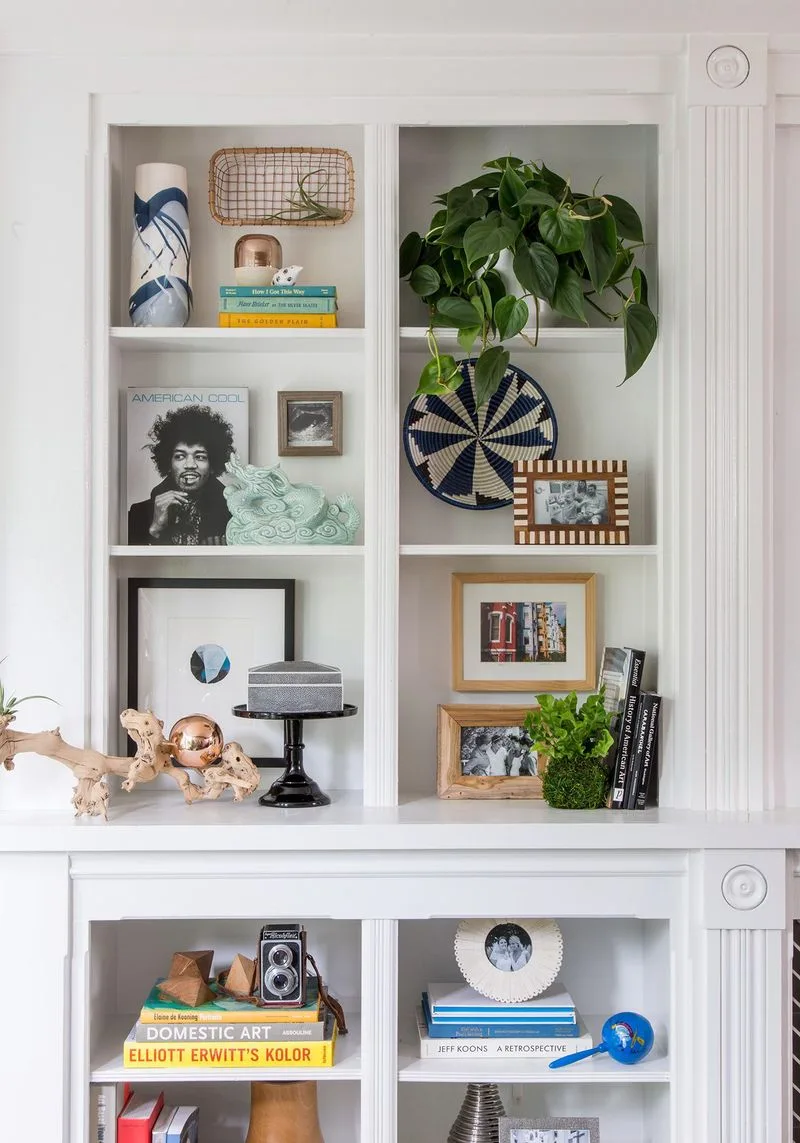
Personal touches make a plant shelf uniquely yours. Incorporate mementos such as family photos, travel souvenirs, or handcrafted items.
These personalized elements tell a story and evoke cherished memories, adding emotional depth to the display. They also provide conversation starters for guests.
Personal touches transform a simple shelf into a reflection of your personality and life experiences, making it feel more like home.
Creating Symmetry
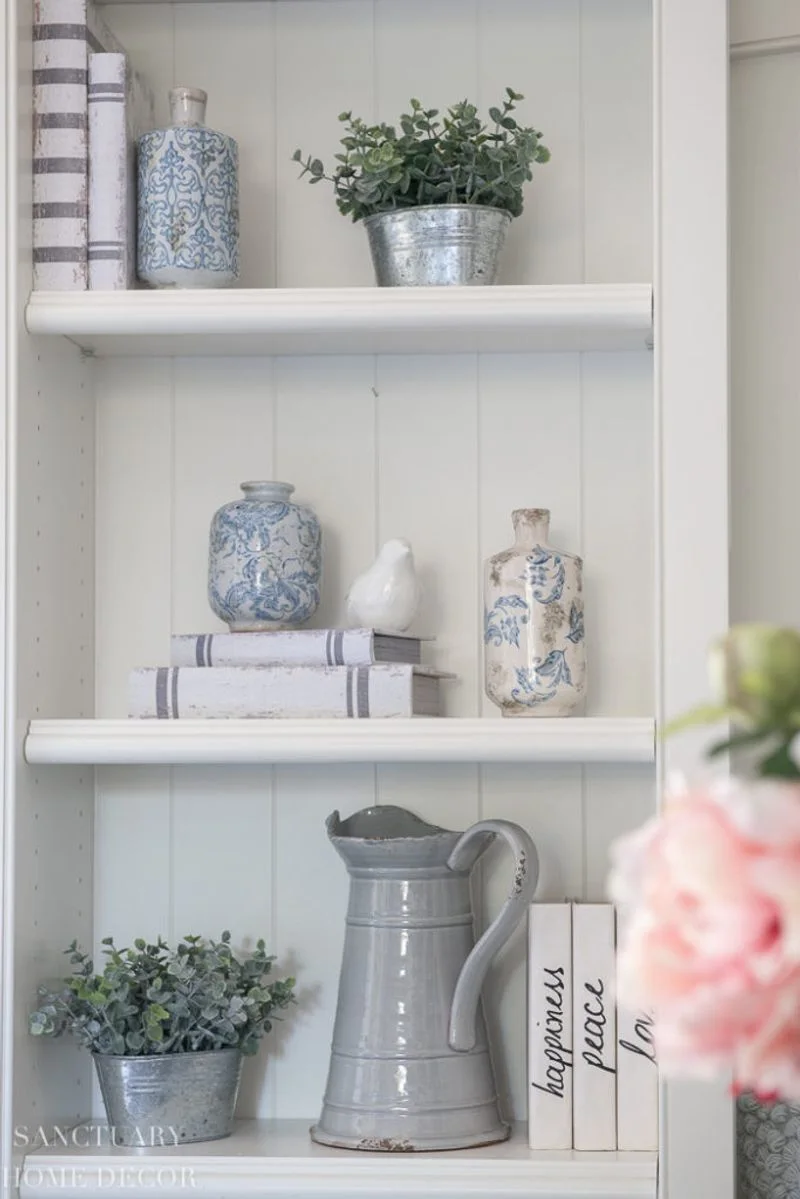
Symmetry brings order and harmony to a plant shelf. Arranging plants and decor symmetrically creates a balanced, aesthetically pleasing look.
Use matching pots or pairs of similar plants on either side to create this effect. Symmetry can make the shelf feel cohesive and intentional.
This approach is ideal for those who appreciate structured, orderly designs. It provides a sense of stability and calm to the space.
Layering Colors
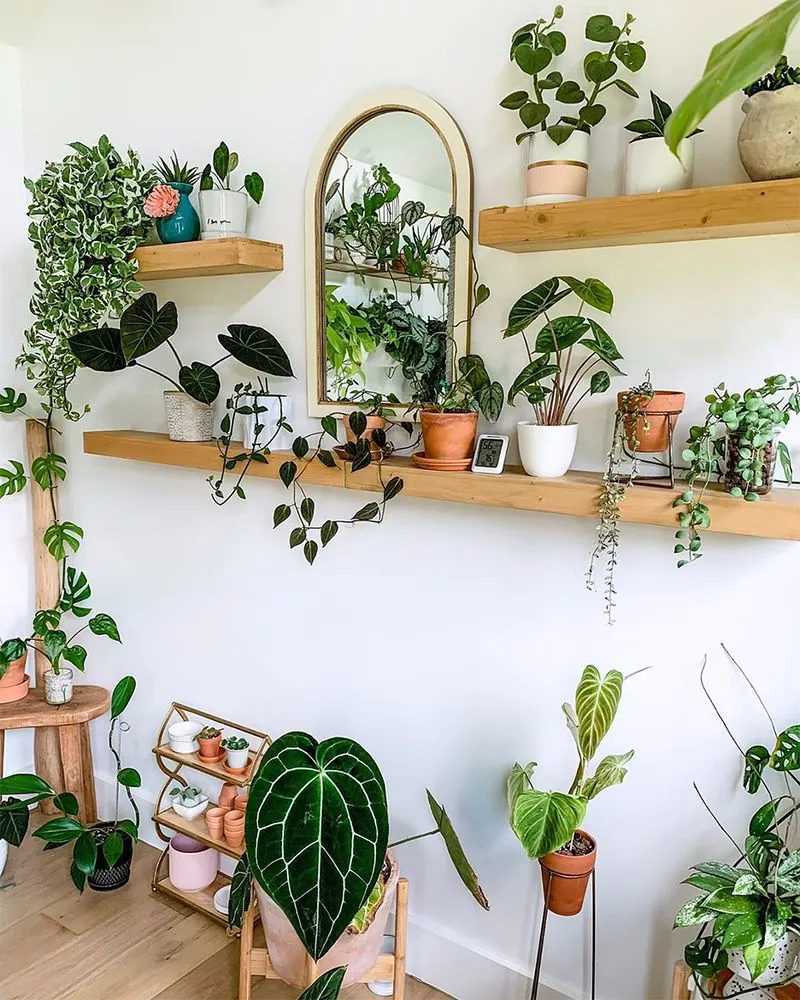
Layering colors adds depth and richness to a plant shelf. Start with different shades of green, from dark emerald to light lime.
Incorporate complementary colors through pots, decor, or flowering plants. This technique creates a vibrant, dynamic display that catches the eye.
The interplay of colors can evoke various moods, from serene to energizing, enhancing the shelf’s visual and emotional appeal.
Incorporating Books

Books bring intellectual charm to a plant shelf. Stack or lean books among plants to add height and interest.
Choose books with attractive covers that complement the shelf’s color scheme. Books can also provide different textures and patterns.
This combination of plants and literature creates a cozy, inviting nook perfect for book lovers and plant enthusiasts alike.
Balancing Proportions
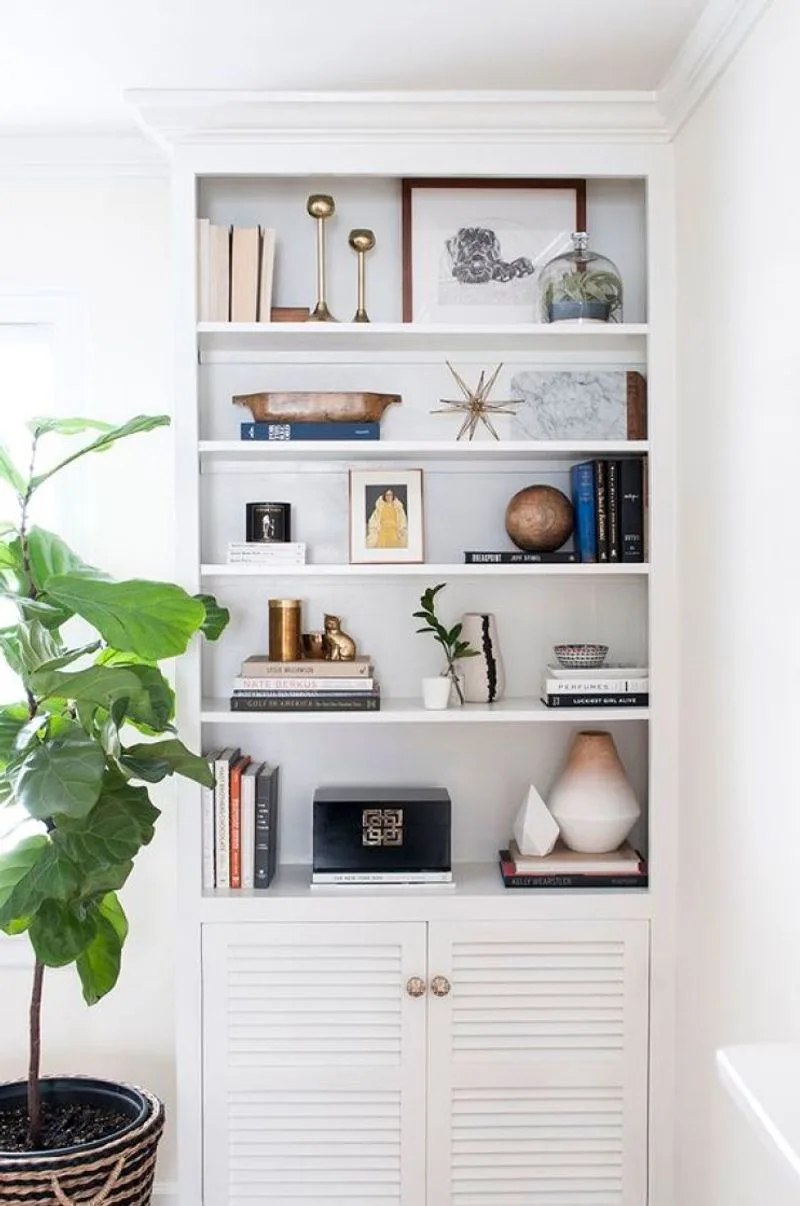
Balancing proportions ensures a harmonious plant shelf. Distribute plant sizes and decor evenly to create a cohesive look.
Avoid clustering all large or small elements in one area. This balance creates a natural flow, guiding the viewer’s eye across the shelf.
Harmonious proportions enhance the shelf’s overall aesthetic, making it feel complete and satisfying.

